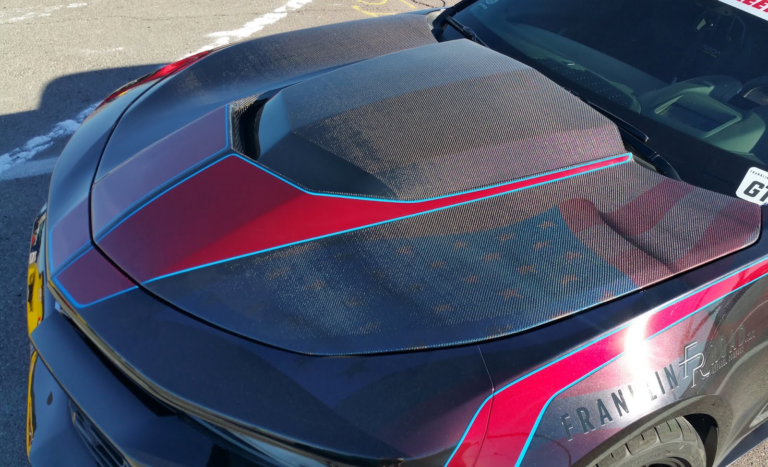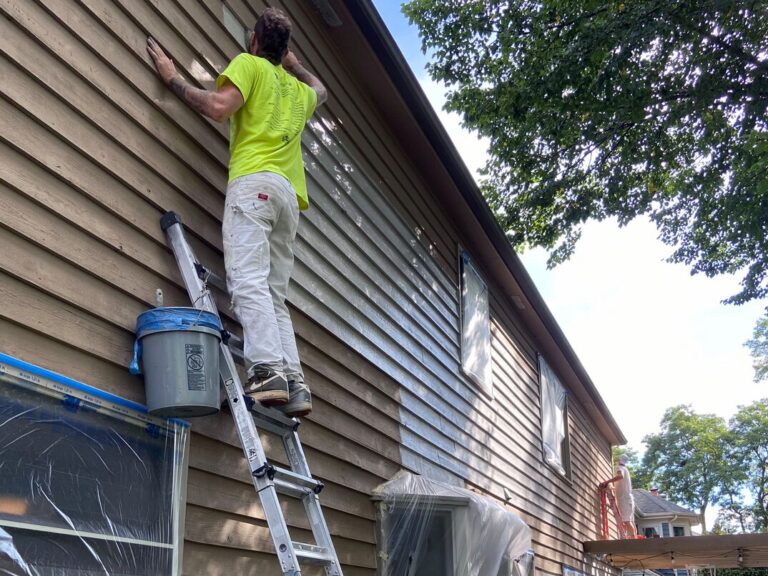No one likes to find orange peel in their paint job. It’s unsightly and can ruin the whole look of a paint job. But don’t worry, there are ways to remove it!
- If the orange peel is still fresh, try to remove it with your fingers or a soft cloth
- If the orange peel has dried, lightly sand the area with fine-grit sandpaper until the texture is even with the surrounding paint
- Wipe away any dust with a damp cloth, then touch up the area with fresh paint, following the original paint can’s directions
How to Remove Orange Peel Without Sanding
Are you looking to remove your orange peel without sanding? If so, there are a few different methods that you can use.
One method is to use a chemical stripper.
This will require you to put on gloves and apply the stripper according to the manufacturer’s instructions. Once it has had time to work, use a putty knife or other scraper to remove the loosened paint. You may need to repeat this process if there are multiple layers of paint.
Another option is to use heat. You can either use a heat gun or a hair dryer on its highest setting. Hold the heat about 6 inches away from the wall and move it back and forth until the paint starts blistering and peeling off.
Again, you may need to go over areas multiple times if there are several layers of paint.
If you’re patient, you can also try letting nature take its course by using damp rags. Wet some old towels or rags with warm water and place them over any areas where the paint is beginning to peel.
Leave them in place for at least 24 hours, then check to see if the paint has come off on its own. If not, repeat the process until it does begin to come away from the walls.
Whichever method you choose, be sure to have plenty of ventilation since fumes from chemicals or burning paint can be harmful.
Also make sure that any surfaces nearby are protected from drips or stray pieces of flying paint before getting started!
Removing Orange Peel by Hand
If you’re looking for a way to remove orange peel without any harsh chemicals, look no further than your own two hands! With a little elbow grease, you can easily remove orange peel by hand. Here’s how:
Start by washing the oranges with warm water and soap. This will help loosen up the peel. Next, use a paring knife to score the skin of the orange in a few places.
Be careful not to cut too deeply – you just want to make shallow cuts in the surface of the peel.
Once you’ve scored the skin, it’s time to start peeling! Use your fingers or a blunt knife to carefully remove the peel from the fruit.
Start at one of the scored lines and work your way around until all of the peel is removed.
And that’s all there is to it! With a little bit of patience, you can easily remove orange peel by hand – no chemicals necessary.
What Grit Sandpaper to Remove Orange Peel
If you’re looking to remove orange peel from your vehicle’s paint job, you’ll need to use a grit sandpaper. The type of grit sandpaper you’ll need will depend on how severe the orange peel is. For light orange peel, you can use a 1500-grit sandpaper.
For medium orange peel, you can use a 1000-grit sandpaper. And for heavy orange peel, you can use a 500-grit sandpaper.
When using any of these grits of sandpaper, be sure to wet-sand the area first.
This means spraying water onto the area before starting to sand it. Wet-sanding will help prevent the paper from clogging up and will also help reduce the risk of damaging the paint job. Start with a small section and work your way around until the entire area is smooth.
If you find that your vehicle’s paint job still has some light orange peel after using one of these grits of sandpaper, you may need to move up to a finer grit. Likewise, if you find that the paper is clogging up too quickly or causing damage to the paint job, you may need to move down to a coarser grit.
What Causes Orange Peel in Single Stage Paint
If you’ve ever looked closely at a car that’s been painted with single stage paint, you may have noticed a textured finish that resembles the skin of an orange. This effect is commonly referred to as “orange peel.”
So what causes this textured finish?
There are actually several factors that can contribute to orange peel in single stage paint. The most common cause is an improper mix ratio of the paint and reducer. If too much reducer is used, it can cause the paint to dry too quickly and produce a pebbly texture.
Other causes include using too high of air pressure when spraying, not allowing enough time for the paint to flash off between coats, or applying the paint too thickly.
Fortunately, there are ways to avoid orange peel when painting with single stage paints. Be sure to always follow the recommended mix ratio and use fresh reducer.
Use low air pressure when spraying and allow adequate time for each coat to dry before adding additional coats. And finally, don’t apply the paint too thickly – thickness should be kept between 1-2 mils wet for best results. By following these tips, you can achieve a smooth, professional looking finish on your next automotive painting project!
What Causes Orange Peel on Single Stage Paint?
There are many factors that can cause orange peel on single stage paint. The most common cause is improper painting technique. Other causes can include using too much pressure when painting, not allowing the paint to properly dry between coats, or incorrect thinning of the paint.
Sometimes, orange peel can also be caused by a bad batch of paint or contamination in the painting environment.
How Do You Keep Orange Peel from Single Stage Paint?
If you’re painting your car and don’t want any orange peel, there are a few things you can do. First, make sure you sand the paint evenly. You can use a fine grit sandpaper or even steel wool.
Just be careful not to sand too hard or you’ll damage the paint. Second, apply the paint in thin coats. The thicker the coat, the more likely it is to have orange peel.
Third, use a good quality primer and paint. Cheap paint is more likely to have imperfections like orange peel. Finally, if all else fails, you can always buff out the orange peel with a polishing compound.
Can You Buff Out Single Stage Paint?
Single stage paint is a type of paint that does not require a clear coat. This means that it is not necessary to buff out the paint after it has been applied. However, single stage paint does require more care when applying it, as any imperfections will be visible once the paint dries.
How Do You Get Rid of Orange Peel After Painting?
Assuming you are talking about orange peel texture on walls after painting-
There are a few ways to get rid of an orange peel texture on your walls after painting. One way is to use a paint roller with a thicker nap.
This will help smooth out the texture. Another way is to use a paint sprayer. This will also help smooth out the texture.
Finally, you can sand the walls down with fine-grit sandpaper until the texture is gone.
Conclusion
It’s no secret that orange peel is the bane of many a painter’s existence. Whether you’re trying to avoid it or remove it after the fact, this texture can be a real pain to deal with. But don’t worry, we’ve got some tips and tricks to help you out!
To start, let’s talk about what causes orange peel in the first place. Usually, this textural issue is caused by improper painting technique or using low-quality paint. If you’re using a high-pressure airless sprayer, for example, you might not be applying enough pressure or holding the gun too close to the surface.
This can cause paint to atomize improperly and create an uneven finish.
If you’re dealing with already-dried orange peel, there are a few ways you can try to remove it. Sanding is always an option, but if you want to avoid damaging the underlying paint job, you can also try using a chemical stripper or heat gun.
Be careful with these methods though – strippers can eat away at good paint if left on for too long, and heat guns can easily damage surfaces if used incorrectly.
Hopefully these tips will help you out next time you’re dealing with pesky orange peel!

